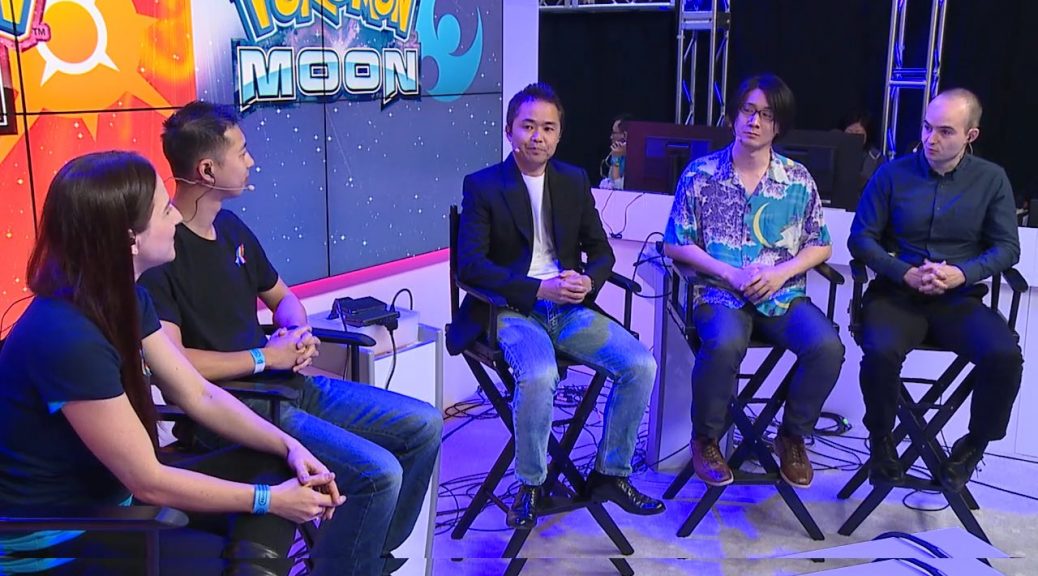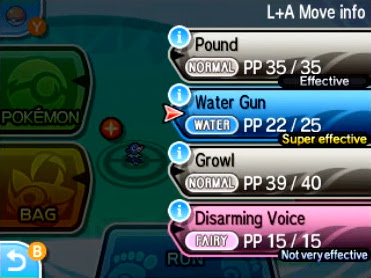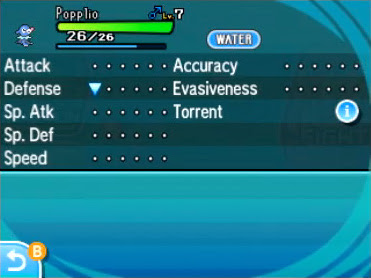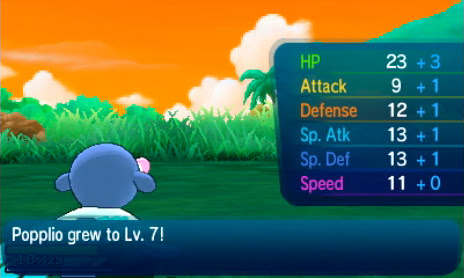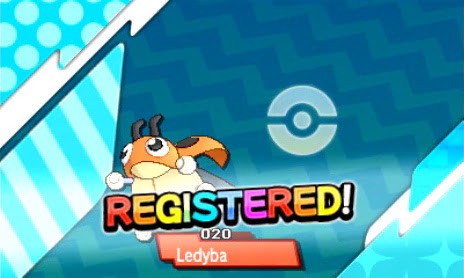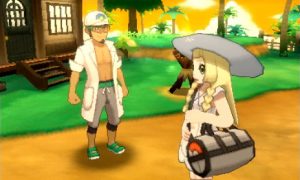Breaking down the E3 Sun and Moon Demonstration
We take an in-depth look at all the small details, including the changes to the battle system, and indications of movepool and stats of the Starters.
Earlier today we gave the highlights of the E3 Demonstration of the upcoming Pokémon Sun and Moon games. However, there’s bound to be tiny details to make note of within the forty-minute video. Give it a re-watch below, and then read on to see what we noticed behind the new Pokémon and battle mode.
Developers’ Words
Before the gameplay is shown, a few questions were asked of the Game Freak development team. Junichi Masuda is the producer, and Shigeru Ohmori the director of the games.

Following a rehash of the previous trailers, they state that they wanted to express the feeling of a place ‘teeming with life’, and mention the importance of both the sun and the moon. They also state that the legendary Pokémon have a ‘unique role’ with the story that hasn’t been done before. That’s a hint towards the plot events.
They then talk about Zygarde and its new Formes, highlighting its appearance in Sun and Moon.
The Alola region has four islands, but they also mention that it has a ‘man-made island as well’. This is a curious fact. Less useful is that they remark that the Starter Pokémon are ‘all very cute’, including their movements. It does however sound like that more focus in how the Pokémon will move and act during battles has been placed for Sun and Moon.
In a likely scripted question, an interviewer finishes by asking about the bracelets on the protagonists’ wrists. No answer is given – clearly the development team do not yet want to talk about it. Given the introduction of Mega Evolution and bracelets containing Mega Stones in generation six games, it’s fair to assume that we will get further information on this closer to release.
Starting out
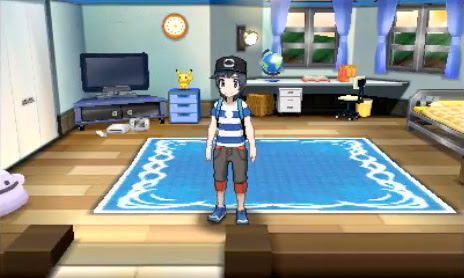
At around 12:45 we get to see gameplay from the protagonist’s room, just like with other main Pokémon games. The note is made that some changes may be made by the full game release – what we see here is just a demo.
The music is instantly noticeable – we get a standard calm tune which seems to feature Hawaiian style instruments. The room has the Pikachu doll, but a Ditto piece of merchandise can also be seen just as the trainer leaves the room.
The game once again features a mother to the protagonist, but with no sign of the father. What’s with Pokémon protagonists and generally not having fathers? It seems that the demonstration or full game will indeed be set right after you’ve moved to this new region.
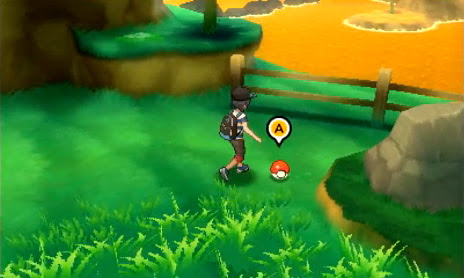
Around the 14:00 mark we get to see the trainer walk around outside. Low grass which host Pokémon is back, and we also can spy a Poké Ball item capsule in the overworld too. The wild Pokémon battle theme has been confirmed to be the tune we heard during the Zygarde Forme reveal video as a wild Ledyba is encountered. Its low level indicates this is the first Route in the game for us.
From 22:22, it’s pointed out that the player’s movements are different from previous games. Throughout the video you might notice this too — Masuda states that the game now has full analog movement, allowing the player to move around anywhere in any direction. Previous games stuck players to the grid, allowing movement in only four directions and later eight in the sixth generation games.
Battle System
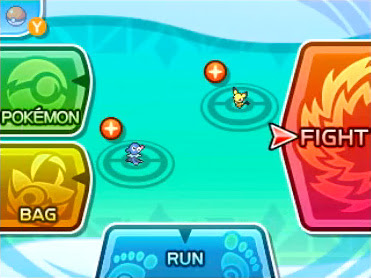
In-battle, the bottom screen of the battle interface has a rearranged setup – the ‘Fight’ button is now on the right, and the Pokémon and Bag options placed to the left and with smaller icons. ‘Run’ is at the bottom of the touch screen. The rearranged setup is only a taste of the changes to come.
Improvements to move selection
When selecting an attack, you can bring up move information within the battle. If you’ve encountered a Pokémon at least once, the interface will also now tell you when a move will be effective, super-effective, not very effective, or presumably completely ineffective against an opponent. This particular feature is bound to be useful for new players, or for those who struggle to remember over 700 Pokémon and their typing.
This new change is also reflected as you switch Pokémon — as you pick a Pokémon to switch to, you’ll be shown its moves and the effectivity of those moves.
Status changes summary
Should a Pokémon’s stats be lowered, an icon appears next to that Pokémon’s 2D representation on the bottom screen. Tapping that icon presents you a summary of the status changes a Pokémon has been afflicted with in battle, such as the Attack, Defense or Accuracy stats. The various status changes will show for up to six stages one way — so we imagine it will show the six stages of buffed or lowered Attack, for instance. To players of all abilities, this particular feature means that you will no longer need to keep track of the many changes that could happen in a battle, which should be particularly helpful for those who battle competitively.
Other notes
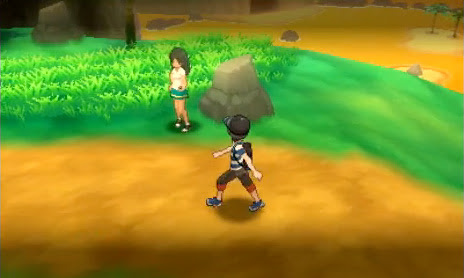
Another cool feature when you’re in the field — when approaching a battle-able Pokémon trainer, the screen vignettes. This can help you distinguish between boring NPCs and ones that you can fight.
You may have already noticed the presence of a Poké Ball icon in the top-left corner in the battle screen. Some people speculate that it’s the button for the most recently used item, but this doesn’t change when the player starts using a Potion mid-battle. Maybe this is a bug — or perhaps you can now register a single item to be shown up there. Either way would be pretty useful!
We didn’t think this would change, but Pokémon will gain experience when catching a wild Pokémon.
The Lass trainer class returns, as does the Preschooler trainer class.
Pokémon moves and stats
So far we’ve learnt the following:
- Popplio has 23 HP at level 6, and 26 at level 7. It’s confirmed to be a specially based Pokémon; at level 8 it has 15 for Special Attack and Special Defense. Its Defense is also at 15, so it seems to be fairly bulky. Its Attack is however at 11, and Speed at 12, so it’s not a particularly fast Pokémon. We see this when the same Popplio at Level 7 is outsped by a Level 6 Pichu, and after its level up, still outsped by a Litten. Popplio learns Disarming Voice at Level 8.
- Litten takes a fair bit of damage from Water Gun in Hau’s battle. Is it perhaps weak defensively?
- Yungoos starts with Tackle.
- Caterpie returns to the games as well – it’s seen in a NPC’s team.
- Pipipeak can ‘peak sixteen times in a second’. It does seem to have a good Attack stat, for its Peck attack managed to knock out Popplio. It will also evolve twice – a three-stage Pokémon.
- A quick observation on speed which we’ve observed from the later Battle Royal segment — a Pikachu is faster than Litten, who is faster than Rowlet. Popplio’s stats indicate that it may be a bulky special attacker, and thus it ends up being the slowest of the lot.
Rotom Pokédex
We get an indication of any possible evolutions for new Pokémon we’ve just caught. This is indicated by a white Poké Ball icon behind the Pokémon’s image.
You get the Rotom Pokédex later in the game — you don’t start out with it. We’re reminded of how the Rotom Pokédex will support you in your journey, telling you information and tips on catching Pokémon and guiding you on where to go next.
The Bag
We noticed that a Potion goes into the ‘Medicine Pocket’ when found. This isn’t a new feature, but it’s nice to see some organisation return.
As in previous games, Poké Balls go into the Items pocket, so we can assume that there is no distinction between Poké Balls and other held items, unlike with healing items.
The Region of Alola
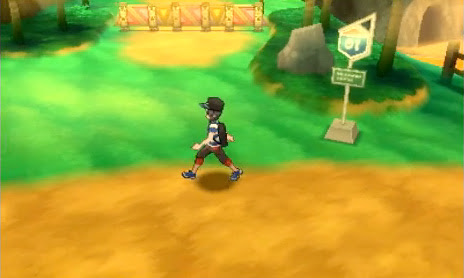
The first Route is called Route 1 (unsurprisingly). We noticed a blocked off side-path when this Route was explored. Access through there is likely granted later in the game.
Hala informs us that there’s a guardian Pokémon for each of the four main islands of Alola. Could these be legendary Pokémon? They are currently hosting a festival to celebrate these Pokémon, so they must be of some importance.
At 33:26, a bit of information about the development staff’s trips to Hawaii is given. They’ve made various business trips to conduct research into Hawaiian culture — this shows from the designs of the town, from the bonfire at the festival, to the utilisation of the stage, to even certain characters’ favourite foods.
The first town — Lily Town

From 29:22, the footage reveals the first town (other than the town in which you live) which Ohmori referred to as Lily Town in Japanese. As it turns out, it’s the setting of the aforementioned festival where, obviously, Pokémon battles are a big part. The battles are conducted under the name of Tapu Koko, who is the guardian of Melemele, the player’s home island.
We meet a bunch of characters here. Hala is the older man who gives you your first Starter. He is described as the island’s strong trainer. Lillie is explicitly described as not being a Pokémon trainer, but she joins you along your journey, presumably to advance the story. She’s seen patting what seems to be Pokémon in her bag. And Hau, your rival-to-be, is “grandson to the kahuna (lit. an important person)” — who that kahuna yet hasn’t been stated, but we’re putting money down on it being Hala.
And the player character? He’s somehow met Tapu Koko. We’re told Tapu Koko, who is named as the guardian of the island, will be a character of significance later. We’re shown in later footage some possible default names for the characters — “Elio” and “Selene” show up in the Battle Royal footage along with “Sun” and “Moon”.
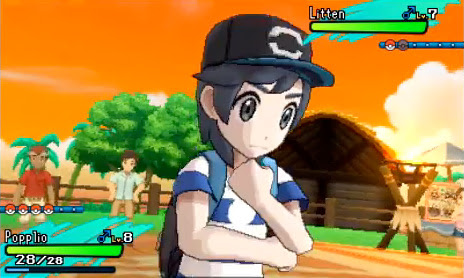
We’re shown a battle with Hau — who has a Pichu and the Pokémon weak against the starter you chose. (Perhaps Pichu will be substituted with a Pokémon who’s stronger than the one you chose.) Note his unique, perhaps active and fast-paced battle theme too. The battle is set on the village stage around torches and a large bonfire, and you can even see the crowd watching in the background. How’s that for dynamic?
Battle Royal
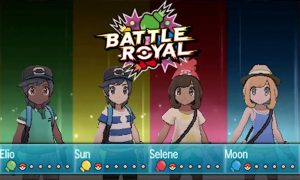
From 36:07, the Treehouse staff start talking about a new mode called Battle Royal, which we’ve touched on earlier. Battle Royal is conducted with four players in an arena featuring motifs for each of the players’ corners and colors. The red corner is decorated with a Charizard motif, blue with a Gyarados, green with Tyranitar and yellow with Haxorus.
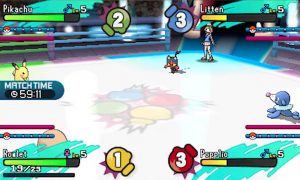
Each player chooses up to three Pokémon to battle with, but you can choose to run with one (which is done in this footage for brevity). You battle with one Pokémon against three others at a time. Once a player loses all their Pokémon, the battle ends and the winner is determined by the game tallying up the amount of Pokémon each player has defeated and the Pokémon remaining. The highest number wins. A curious little point is that the interface depicts six slots per player — could it be the case that rules can be customised, allowing for six?
Trainer customisation is a thing, too, as the trainers in the footage shown are wearing different outfits. While we’re told “we can’t really talk about that yet”, it has at least been explicitly stated to be in the game.
Wrap up
At the end of the Treehouse session at 40:04, the developers mention how great the reaction has been. Masuda mentions the goal from here on in — expanding to wider audience, which they’re demonstrating with having Traditional and Simplified Chinese to the games. The video wraps up with thanks — with Masuda mentioning that Game Freak have been challenging themselves to do a variety of new things which he hopes we’ll enjoy in the game. Ohmori — who mentions his first time directing Pokémon at Game Freak presents “a lot of challenges” — feels the team have really “brought the game together” and turned it into something fantastic, hoping the fans will really look forward to it.
Have you noticed any other details that we haven’t mentioned? Let us know in the comments!
Source: Nintendo of America
Co-written and edited by Jake
Image source: Nintendo / The Pokémon Company
